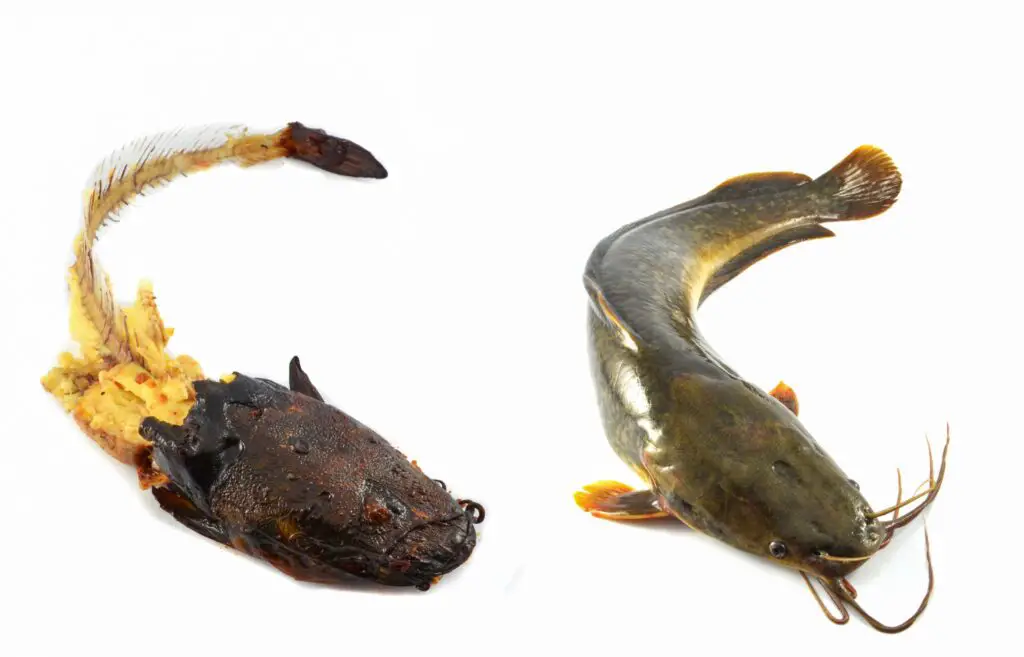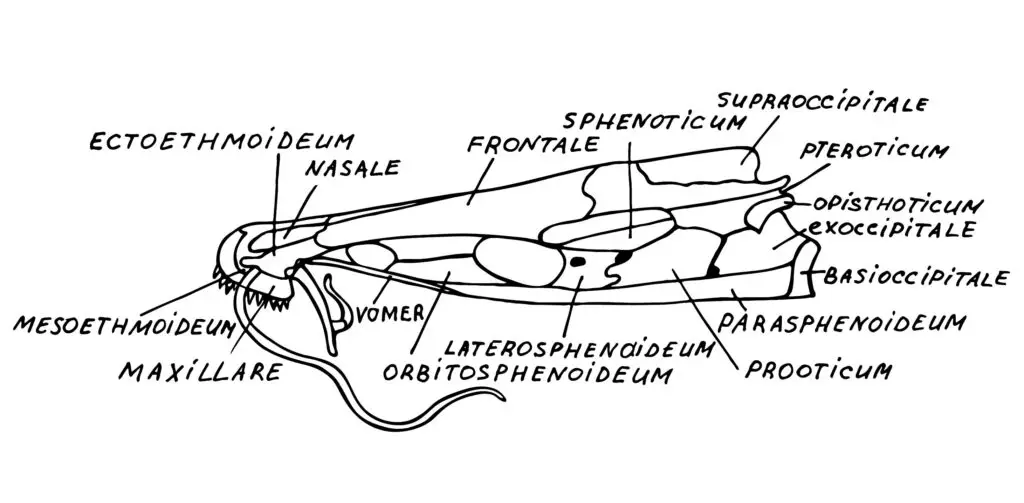Catfish have a backbone. The backbone of a catfish does many things, like protecting vital organs, helping the fish move, and hold the body together. Like other vertebrates, most fish have a backbone at the center of their nervous system. Catfish are known all over the world for their unique whiskers. It is a large fish, though there are smaller types. It can live in both freshwater and saltwater. This fish stands out because it has whiskers. It looks like a cat because of its jaw and whiskers.

Catfish Spinal Features
You probably already know that there are over 3000 different kinds of catfish and that their skeletons are very similar despite minor differences in their bodies. Catfish skulls are compressed from the back to the front. There are weak connections between the bones that make up the cranium. The spines on a catfish’s dorsal and pectoral fins protect it from being eaten. This creature has a wide body and two barbels, one of which is much bigger than the other. Its head is also quite wide.
The bodies of these fish, which are about 30 centimeters long, are very long. The body’s sides, primarily gray or muddy brown, have small white dots. When the fish is out of the water, its skin is protected by scales and a slimy substance. There are bones in catfish. They have a big bone that looks like the spine and a few smaller bones that look like ribs. The fact that these bones are both big and well put together is significant. The catfish’s main bone is in its head, and its other bones are connected sideways. These stand out because they are stiff and short. The spines of a catfish fit snugly into a groove on the catfish’s pelvic girdle. The fish will be able to swim better because of this. Several types of catfish have plates made of bone that cover their skin. Catfish of all kinds have scutes, which are like armor.

Is it True That Catfish Have a Backbone?
Catfish often do have a backbone, though this might vary depending on the species. The backbone of a catfish is round from the back to the front. It has many bones, but weak ligaments connect them. So, catfish are not fish, but rather, they are classified as vertebrates. Fish have backbones that help their organs stay in place. Other fish types are invertebrates or vertebrates based on how their skeletons are made. Vertebrates, on the other hand, are made up of all fish with backbones. Catfish have many bones, including a flattened dorsoventral cranium, yet their connections are brittle and loose. For this reason, we don’t classify catfish as fish but as vertebrates. Every living thing relies on its backbone to support its organs and prevent them from writhing around inside.
How Many Bones Does a Catfish Have?
Catfish have almost as many bones as other fish do. This includes the skeleton, spine, ribs, and fins. Catfish bones are both structural and functional, which helps the fish swim easily and well. Their structures help them defend themselves and help them find food.
Why Do Catfish Have Backbones?
Catfish are one of the fish species with unique looks. It looks almost funny because it has a long, skinny body and a mouth that sticks out, but the catfish stands out because of its unique spine. The backbone of a catfish is at the top of its head, not in the middle of its body like most fish. Scientists have been puzzled by this strange trait for a long time, but new research may have found out why. On the other hand, it was found that catfish have a series of smaller bones along their spinal column, while trout only have one large bone. When swimming in fast currents, this shape helps them because it makes it easier for them to bend their spine.
Do All Fish Live in the Water and Have Backbones?
Fish have both an outside shell and an inside shell. The endoskeleton connects the spine to the rib cage. The exoskeleton is a rigid framework made of bone or cartilage on the outside body. No species of bony fish have a full exoskeleton, but some, like the catfish, have parts of them that protect their fins. All fish have a structure called the endoskeleton.
How to Debone a Catfish?
-
- First, make a cut in the skin of the catfish just behind its head. Make cuts around the “neck” in a full circle, but don’t cut off the head. After that, the fins need to be cut off. Make sure and be careful when holding the catfish the proper way so you don’t get poked by their fins.
-
- Then it’s time to take the skin off. Depending on the type of catfish, that could be hard and gross.
-
- Also, cleaning catfish raised on a farm is much easier and takes less time than cleaning catfish caught in the wild. You’ll need a few strong supports, a good knife, some care, and a lot of time.
-
- After taking off the skin, clean the catfish’s head, stomach, and other organs.
-
- The next step is to cut a hole in the back and a long hole along the spine. Before going down, it’s time to cut the tail. Take your time and cut carefully when you get to the ribs.
-
- An important step is to pull the ribs off of the fillet. When you’ve finished filleting one side, flip the fish over and do it again.
Is the catfish a vertebrate?
Catfish get their name from the barbels, the long, thin tactile organs that can be felt near the mouth and give the impression of cat whiskers, hence the comparison. There are about 3,000 recognized species of catfish, making it one of the most diverse vertebrate orders.
Which fish species lacks a backbone?
Hagfish, lampreys, and lancelets. Sand lancelets are tiny, see-through creatures. A jelly-like rod serving as support compensates for the lack of a backbone.
Conclusion
As a final thought, please remember that catfish have a backbone. Catfish are vertebrates, like most other fish. Even though this fish’s bones aren’t as apparent as other creatures, they are still there.
The catfish backbone serves several important functions, such as providing structural support, protecting the spinal cord, and allowing movement. The backbone is made up of a series of interconnected bones called vertebrae. This allows for flexibility and movement, which is important for many activities of a catfish, such as swimming, hunting, and escaping from predators.











